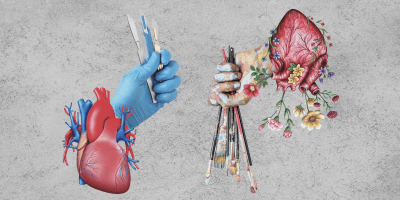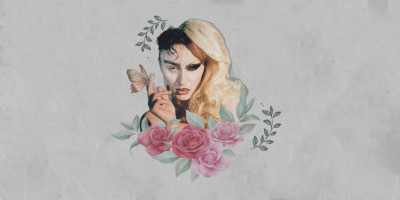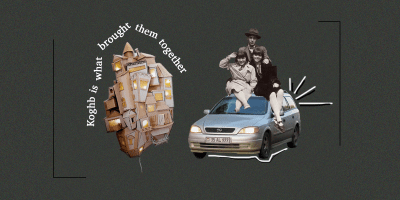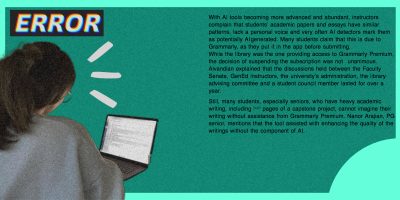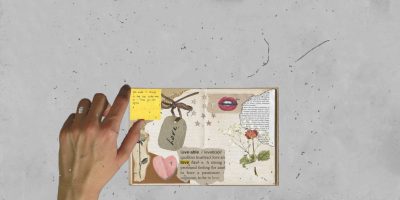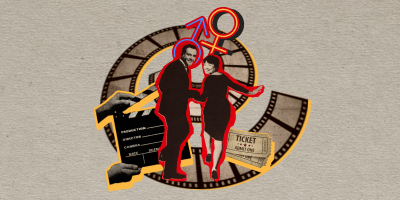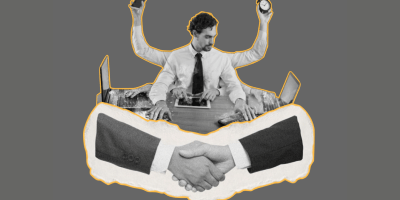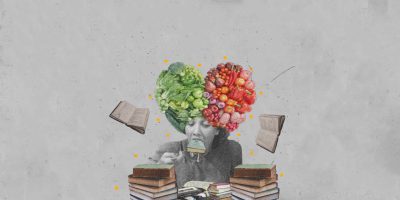
As technologies advance, the line between human creativity and automation is starting to blur, becoming a subject of great interest and debate. AI is making its way into many fields, including art. What was once a deeply personal, human-driven process is now being influenced by machines.
Some see this as a new way to boost creativity, while others worry it takes away from the emotional depth of art. But as the brush meets the binary, many artists are faced with new questions: How will this technology change the way they create? And what does art truly mean in this digital world?
“Art is meant to carry deep symbolic and philosophical meaning. It should help us navigate moments of crisis, to see the way, to diffuse the fog we live in,” said Ruben Malayan, a visual artist and an adjunct lecturer at AUA said.
He expresses doubt that contemporary art fulfills this role in Armenia today: There is uncertainty over whether society is truly benefiting from the art being produced.
“Art is supposed to take something and consolidate it into a visual message that is impactful and lucid,” he says. “It’s supposed to clarify something for us—and I don’t think it does that anymore.”
Malayan feels that today’s art is often seen as just decoration instead of a way to share a message. Without that deeper meaning, he thinks artists are just making “wallpaper,” which AI could easily create faster and more efficiently.
He believes that while AI can be a useful tool for artists, the true strength of art comes from its message.
Malayan believes that art goes beyond mere aesthetics–it speaks to experiences, emotions, and intentions. Without the intention behind the art, its value is hollow. “AI can only imitate; it cannot create anything,” he says.
Aleksandra Nikoyan, EC senior and artist, shares similar views. She acknowledges that AI will be a useful tool—perhaps for saving time by creating backgrounds or providing inspiration, but it ultimately will not replace the human element, as emotions and personal meanings are what truly shape the art piece, and AI cannot do that. “Even though AI art is pretty to some, it is soulless,” she said.
But there are questions about what the future holds for the Armenian art scene. Malayan reflects on the idea that “art is a mirror put to nature,” suggesting that the future of AI art will depend on the kind of society we cultivate.
While uncertainty is inevitable, the art we produce is inherently tied to who we are as individuals. If years from now, a society increasingly relies on machines for different jobs, this reliance will also be reflected in the art that comes from them. “Art will always be a mirror because who you are as a human being, that’s the art you produce,” he explains.
For EC junior and digital artist Ani Davidian, however, the future of AI art looks different.
She mentioned a trend she has noticed in which ideas emerge, causing widespread concern about the future of art, only to fade away immediately. “I say give it a second, and AI art will die just as quickly as non-fungible tokens (NFT) did.” Davidian is optimistic about the current art scene in Armenia, noting that it’s thriving more than it did a few years ago.
With new opportunities like Drink and Draw (DnD), she sees young Armenian artists gaining more visibility. “Right now it’s far easier for me to find a place in a community of artists than it was maybe five years ago,” she says.
Nikoyan, on the other hand, mentions that companies are increasingly relying on AI art due to its speed and cost-effectiveness.
While this, in itself, might help businesses, it might put some artists at risk. She believes that a good number of companies will still hire artists to design posters and commercials for them, but there will be a decline in demand.
As Armenia’s art scene is continuously shifting, the heart of art remains in creativity and commitment—no matter what technologies get involved.
Davidian and Nikoyan’s advice to young artists in Armenia is to focus on improving their artistic skills. “Don’t worry about AI, just create,” Nikoyan advises, reminding them that support will come from those who recognize their value.
As for Malayan, he inspires persistence and passion. “What’s worthy will stay; everything else will be washed away,” he says.
Ultimately, it is this dedication that will define the future of art in Armenia, regardless of the tools available.
